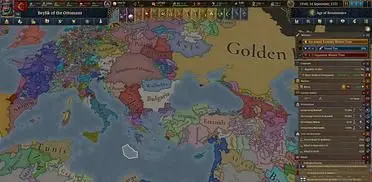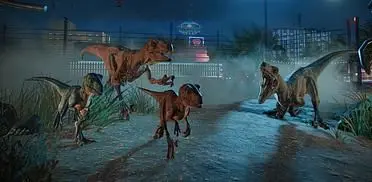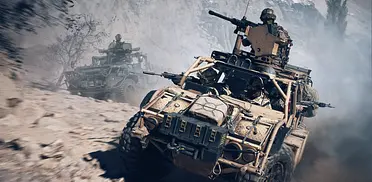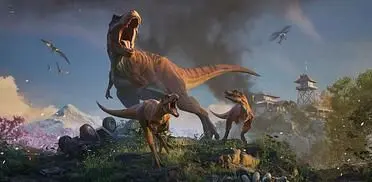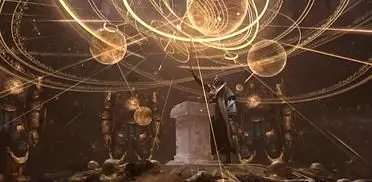With the rise of trading card games (thanks Hearthstone), it seems the addition of card-based systems in games are becoming increasingly popular. RPGs are using them, dungeon crawlers like Darkest Dungeon are using them and now so to is Last Days Of Old Earth.
That’s not to discredit the work of developer Auroch Digital, however. As a strategy game, Last Days Of Old Earth actually makes far greater sense to utilise cards, building decks - or armies - and pitting them together in a 4X-esque strategy layer. We spoke with Peter Willington, producer at Auroch Digital, to find out more about the game.
GameWatcher: You’ve said Last Days Of Old Earth is a spiritual successor to Armageddon Empires - what was it about that game that appeals so much, and how do you want to improve on it?
Peter Willington: Last Days of Old Earth is definitely inspired by Armageddon Empires, because the team here at Auroch Digital absolutely loves that title, but it’s also very much its own game.
We took AE as a sort of jumping off point, since we knew we wanted to take turn-based strategy and combine it with card game elements. We also knew we wanted the kind of tactical complexity and depth of that classic, as well as a setting very much removed from life as we know it today. But while Last Days of Old Earth certainly pays homage to AE, it isn’t intended to be a sequel.
Our universe and tone is colder, more sombre. This is a world where the sun is fading, life is a constant struggle, and resources are incredibly precious. We’ve got two very different playing factions - the Skywatchers and the Automata - going up against one another, each with specific heroes and units that have their own abilities that compliment different kinds of play styles.
We’re also aiming for a good balance of hardcore tactical depth and accessibility, and combining it with thoroughly modern strategy game design. So while I don’t think we’re strictly trying to improve upon what was laid down by Armageddon Empires, it’s certainly inspired us to forge our own path.
GameWatcher: Where did the idea for the game’s setting come from, and how did that affect the game’s design?
Peter Willington: Very early on we knew we wanted a setting for the game that was set at the very end of Earth’s lifespan, but we also knew we didn’t want to do one of the typical post-apocalyptic scenarios. So we asked ourselves, if humanity doesn’t kill itself with nuclear weapons, get overrun by zombie hordes, or pollute the planet until it’s scorched, what does The End look like?
We decided that the Sun was dying, that warmth was little more than a memory, and that humanity had already peaked and was in a slow process of decline. I don’t want to go too much into narrative details, as we want to save those for the Campaign content update later in Early Access, but let’s just say that we’re well aware that stars actually grow hotter when they’re dying of natural causes, so something very mysterious must be afoot…
GameWatcher: How do you go about designing rich strategy gameplay like this? Is there a lot of balancing involved?
Peter Willington: So much balancing! We were play-testing sections of the game months before it was even announced and we’ve constantly been reading up on fan feedback in our closed betas.
We’ve been fortunate to have talented game designers working on the project throughout, who eat, sleep, and breathe strategy and tactical board games, but as with all great game creation it really is about turning our ideas into reality and then asking people to give us feedback - hence the game being in Early Access.
GameWatcher: Why did you decide to focus on card-based gameplay over more conventional turn-based strategy gameplay?
Peter Willington: I think it’s a blend of the two really. There’s the turn-based strategy of exploring your surroundings, grabbing resources, fortifying your position, and expanding your range of Supply so that your units are effective over a wide area of the battlefield.
Then there’s the turn-based combat, in which your units and heroes fight enemy armies. You have an attack value, defence value, can take a certain amount of damage and have special abilities which can be used to outwit your opponent. We also have a concept of Fate in Last Days of Old Earth, where you can turn the tide of battle at critical moments.
The card-based play extends to these units, as each of them is effectively represented by a card. You have a pre-constructed deck (which you’ll be able to create for yourself after our Deck Builder content update), and what you include in this deck will determine how you’ll approach the conflicts ahead.
You might want to prioritise lots of low cost cards that are quick to play from your hand, so as to get a head start on your opponent. The opposite is an equally valid strategy, as is decks comprising of more units but fewer heroes, or including transport vehicles to move great distances efficiently, and so on.
We think this combination of deck building, thoughtful combat, resource management, and deep strategy is unique, which we think makes our game stand out from the crowd.
GameWatcher: Were there any other more recent games that inspired different aspects of Last Days Of Old Earth?
Peter Willington: Personally I feel that people who make games - coders, artists, designers, and so on - are all inspired by the games they’ve played and are currently playing, whether that be on a conscious or subconscious level.
Making games is less a process of taking bits of one game, bits of another game, and actively slapping them together to create a third thing, it’s more a constant and evolving kind of iterative process that draws inspiration from all sorts of sources across our medium, and others.
GameWatcher: Why did you decide to release the game in Early Access? How has that helped you develop the game?
Peter Willington: We think one of the best things about Early Access is that there’s a deeper connection to the people who are supporting you right out the gate. So our approach to this release has always been that the initial version of the game needs to be a super fun and completely engaging strategy title, which we can then add to, for free, to further evolve the ideas we’ve laid out.
Very soon our first planned piece of content will be released, which is our Deck Builder. This allows players to tailor a deck the way they see fit. Then we’re dropping Stealth that allows for so many devious new strategies, such as ruining opponent structures and hiding in plain sight. After that we bring Aircraft into the mix, which allows players to cover huge amounts of space fast and strike when it’s least expected. After that is our Campaign, where the player will learn more about the struggles of the Skywatchers, and what the Automata are.
As I noted earlier, feedback is something we adore, and being in Early Access is the perfect way of having that kind of one-to-one relationship with strategy gamers.
GameWatcher: What would you say is the most important aspect that a developer must focus on when releasing an Early Access game?
Peter Willington: Communication. I think Early Access is a great way to speak with the people that love your game, which is why our community team is always checking in on the forums and Steam page to see what people are up to.
GameWatcher: You’ve released a game that has enough content to satisfy gamers that decide to purchase it in Early Access. How important was it to have this be the case, and how do you find maintaining that sense of goodwill between dev and players?
Peter Willington: For us this was really important. We wanted to get the core gameplay into the hands of as many people as possible, as early as possible, and you can only do that by having a fun and full game that feels satisfying to play. We only wanted to launch when we felt this was the case, and we’ve done exactly that. To keep this up we think that regular updates of content and actively listening to players is the best way of showing them we’re in this for the long term.
GameWatcher: How do you decide what features you want to implement into the game and what you’ll work on next? Has this been affected by input from the community at all?
Peter Willington: Oh yes, absolutely. We’ve already announced the content that’s upcoming, but we’ve already been responding to feedback and feature requests. Off the top of my head: we were asked to make it slightly more clear when Action Points were being used, as this is a super valuable commodity in LDOOE. So we’ve done exactly that by improving our UI to be clearer with that kind of information. It’s seemingly small changes like this that we know make all the difference for hardcore strategy fans, so we’re always keen to receive suggestions.
GameWatcher: Would you say that multiplayer is a central aspect to LDOOE and how do you go about designing a game for both single and multiplayer types of games?
Peter Willington: Firstly, yes, multiplayer is a big deal for Last Days of Old
Earth. We want players to go through the tutorial to find their feet, play a couple of rounds of Skirmish, design a deck of their own, and then jump into the online multiplayer to take on the world. I think gamers are really going to get into the meta of deck building… I know that when I’m not actively working on the game myself, I tend to be thinking about my next deck configuration! There’s a deep satisfaction to developing a strategy, building a deck to enact that strategy, and wielding it against online opponents.
As for how you make a good single and multiplayer game, I suppose that unlike, say, a third person cover-based shooter, the core of the gameplay in strategy games doesn’t fundamentally alter between modes. Sure, your opponents may be human rather than AI, but the base details are the same. So we’re quite lucky in that we didn’t have to change the gameplay in that way.
That said, I think players are going to be pleasantly surprised with what we’re doing for the Campaign mode, as there’s definitely a fair few twists in there to keep people on their toes.
Last Days Of Earth is a strategy game with card game elements, and is available in Early Access on Steam now.





